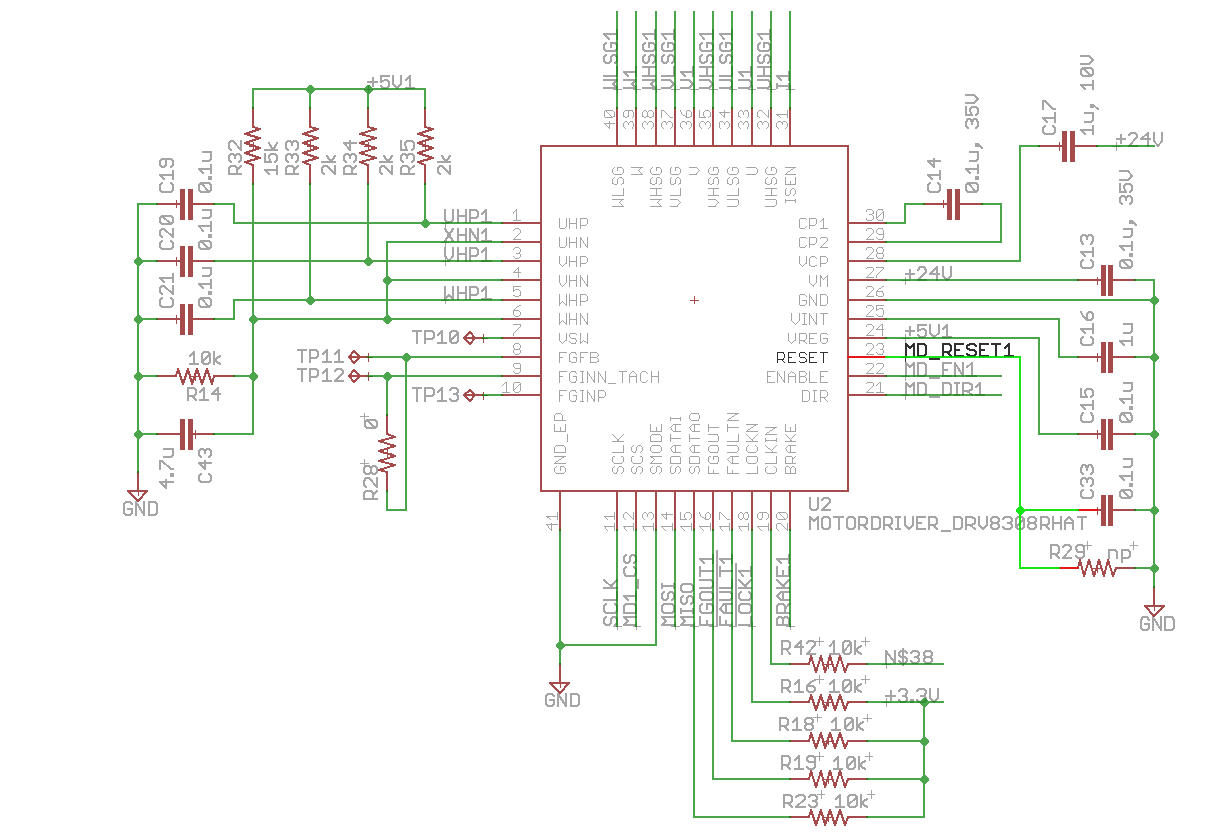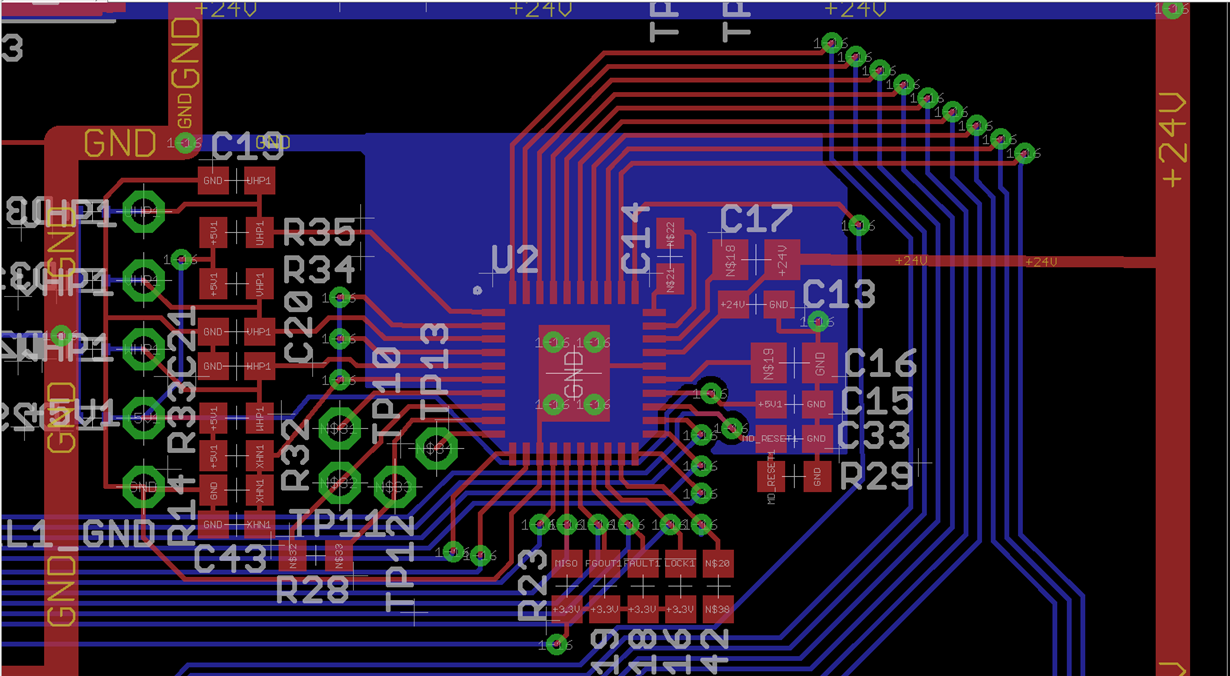Hi-
I’ve been working with the DRV8308 EVM for a while and finally got some proto boards back for integrating it into my own design. However I’m seeing a problem where when I apply 24V at the input, the chip takes 130mA and gets very hot. This is on the initial power-on, so I haven’t loaded it with any settings or even tried sending a signal from the microcontroller beyond setting the ENABLE pin to 0V.
I’ve verified that it is the motor drive consuming the power but cutting the +24V trace to the 8308 and everything else runs as expected. I haven’t connected the motors yet at all in any of my testing. I have also gotten the same results with a board that doesn’t have the drive FETs populated.
I’ve attached my schematic, and here is a description of all of the pins, where they are connected, and their value. Did I connect something incorrectly? Is there something I’m missing?
VSW: 0V
VREG: ~1V
ENABLE: 0V
FaultN: 3.3V (pulled up to digital VCC)
SCLK, SCS, SDATAI, SDATAO, FGOUT, FAULTN, LOCKN, BRAKE, DIR, ENABLE, and RESET all go to the microcontroller with pullups as shown in the schematic
Thanks!



